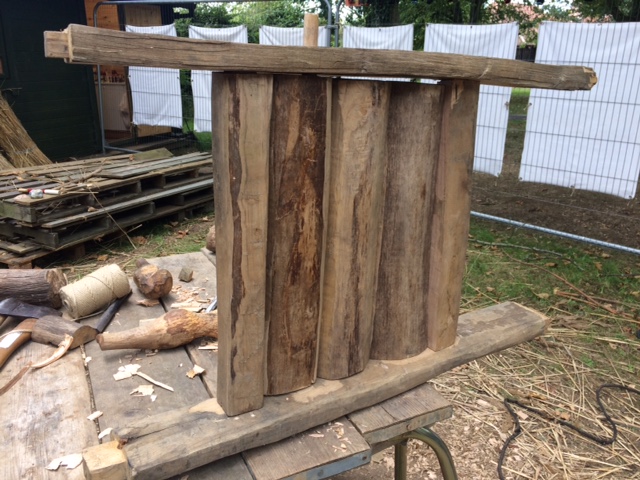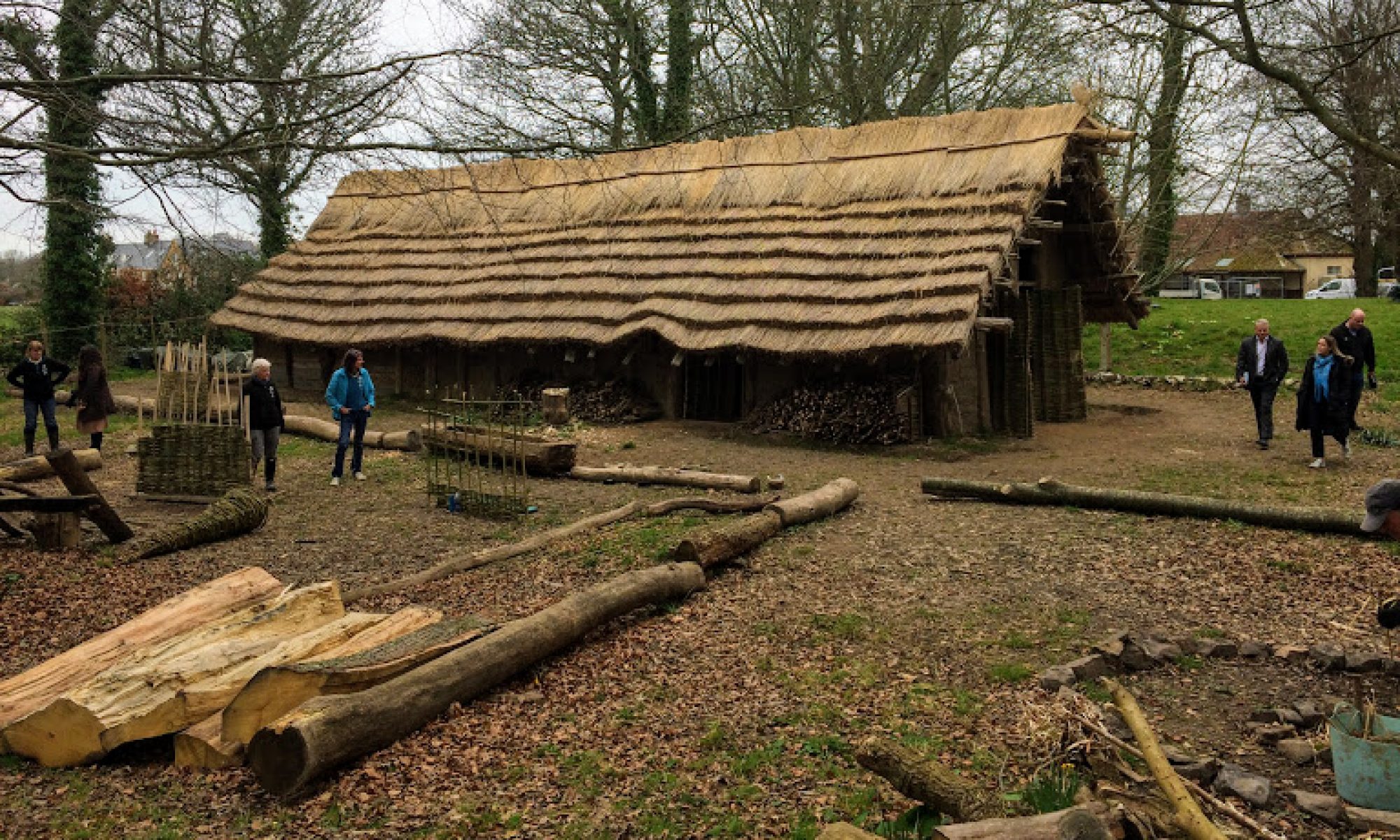Monday 10th September 2018
We are back at work after the summer break. Everyone is refreshed after their break and what an amazing summer it’s been!
It feels like we are on the last leg of this fantastic project. The next few months will see the building finished as a blank canvas, with, frame, roof, walls and floor complete. The next few weeks will see discussions between our fantastic volunteers and to identify the first series of tasks that will start to fit out the building (in terms of beds, storage, upper floors, shelves) and will form a range of activities and tasks that turn the building into an interesting attraction for visitors.
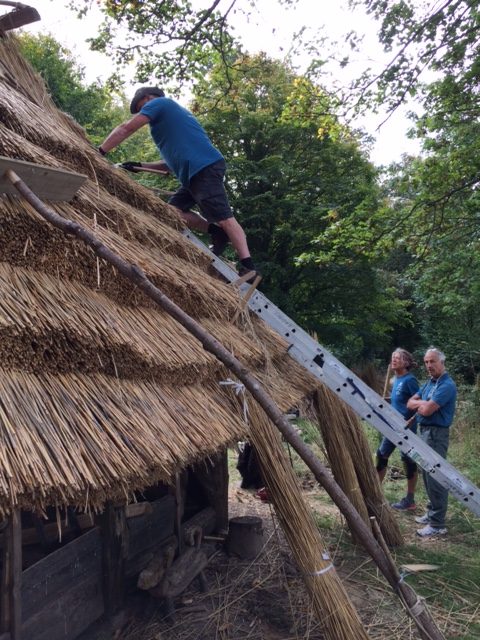
Today we press on with thatching the roof. We have around one more layer of thatch to put on before we then have to start working on the ridge. The ridge will consist of several thatch rolls that fill the cruck between the rafters and form a dense mass of reed beneath the finished ridge. We then need to trim the rafter ends and thatch the final two layers over the top. The final touch will be the addition of a cap – that may be reed, wheat straw, bracken or even turf.
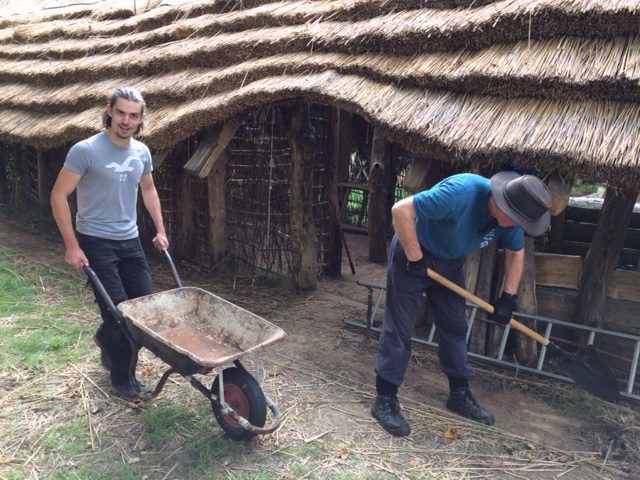
We are also marking out and de-turfing the ditch that will run around the building. This ditch will act as a drip trench to soak away water rainfall from the roof – but will also double as a robber trench to get our daub material from (topsoil).
Tuesday 11th September 2018
Today sees the start of daubing at a determined scale! Our test panels have had several months to dry and endure the weather, giving us time to see how well they work. The results are positive. The local soil sees to produce a fine grade daub that resists weather well, is relatively easy to mix and apply and gives a good surface finish. The key to mixing daub is ensuring a high fibre content to prevent excessive shrinkage and cracking.
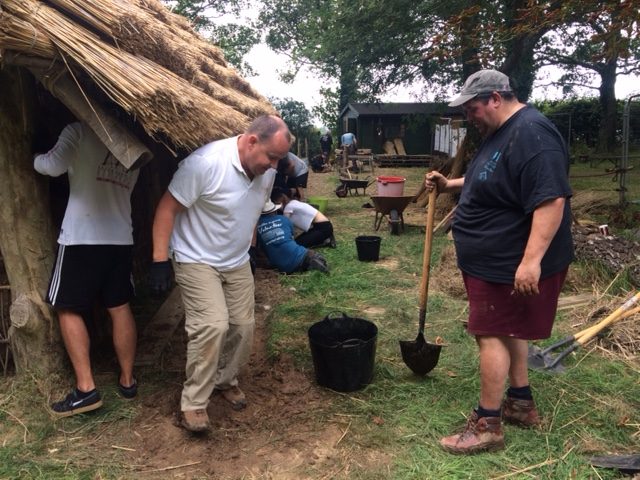
We are using hair and hay as the fibre for our daub. Clay is commonly used for daub (in clay rich areas) and animal dung can be used as the fibre element as the digestive system of the animal processes the plant fibres to a high degree, but our testing has shown that the local loess soil is a very good daub material when mixed with amble fibre.
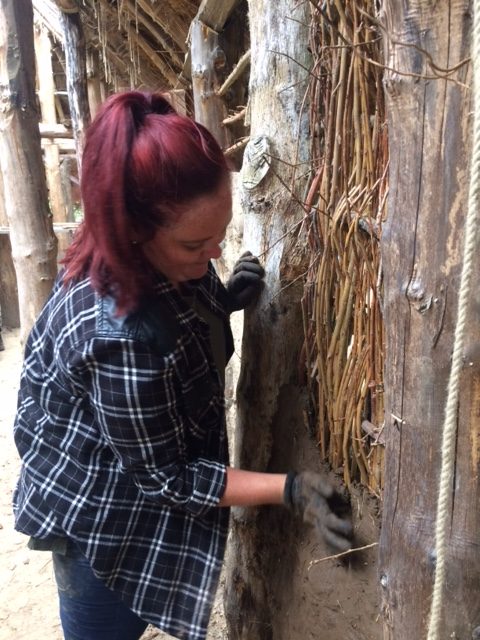
We have extra help today from a group of volunteers from Lloyds Commercial Bank. They are really getting stuck into the task of daubing and the walls are becoming dark and solid from the ground upwards!
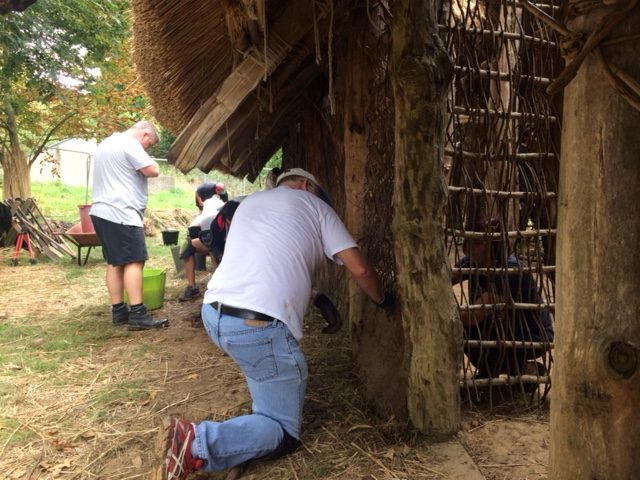
Today we have also started giving serious thought to the second mezzanine floor. This floor will be installed at the main entrance end of the building and enable further storage of tools, repair materials, harvest and fodder crops. We have thought long and hard about how this floor will function and how best to enable light to access the heart of this end of the building.
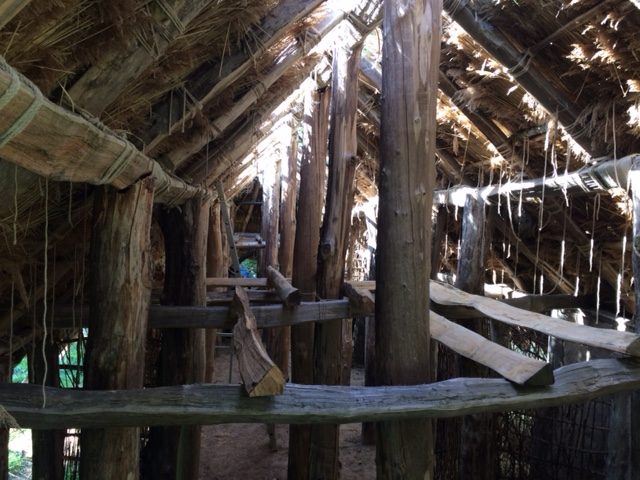
Wednesday 12th September 2018
So, an interesting day today. Teams have carried on with thatching (of course) while Bill has been fitting and securing joists for the mezzanine floor above the livestock end of the building. The tie beams and joists for the second mezzanine floor have also been shaped and positioned ready for fixing.
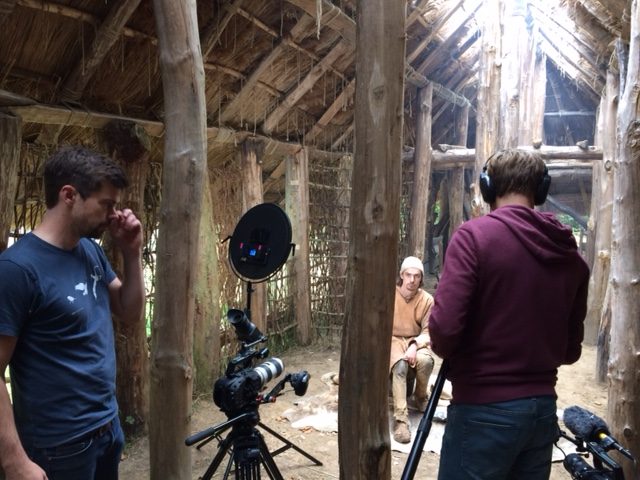
James Dilley (flint knapper and ancient technologist) was here today to be filmed making a Neolithic Flint Axe rough out. It was great to see James again and great for the volunteers to see outstanding knapping skills at close hand. The sound of a real Neolithic skill filled the longhouse – a sound that was undoubtedly heard in building like this 6000 years ago.
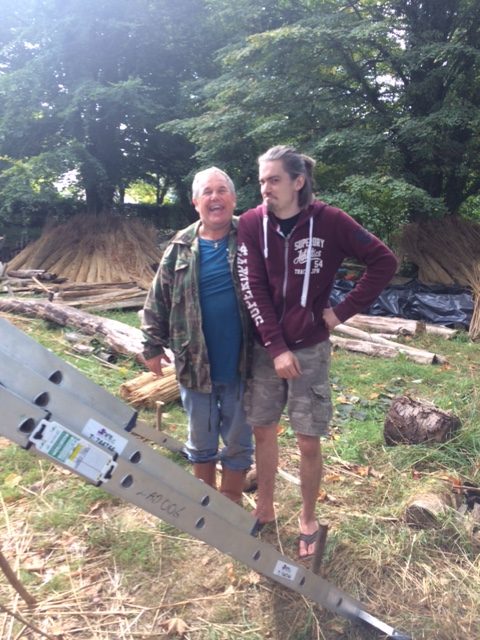
This afternoon, between jobs, our volunteers met with Jersey Heritage staff to discuss ideas for the exciting future of the building. From the very beginning, this project was as much about the volunteers as the building, and it is great to see them putting forward great ideas for the kinds of crafts, skills, maintenance and improvements to the longhouse and its environs. This project will clearly go from strength to strength when the building is “finished”.
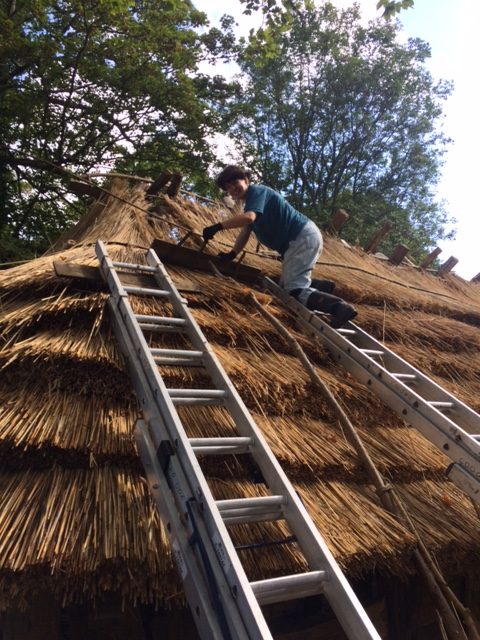
Thursday 13th September 2018
After rain last night, the site is damp and autumnal this morning. Iris, Danny and James are thatching this morning in an attempt to get closer to finishing layer 6. I am dressing the thatch on the south side – making sure each layer is the correct distance from the previous. Dressing involves the use of a leggit or paddle that is used to pat (sometimes harder!) the ends of the reed upwards towards the roof ridge. This process neatens the roof, but critically also tightens the reed beneath the sways that clamp it into position.
Bill and Mike are finishing lashing the joists in the first mezzanine floor so we can proceed with making it a usable and safe surface for storage.

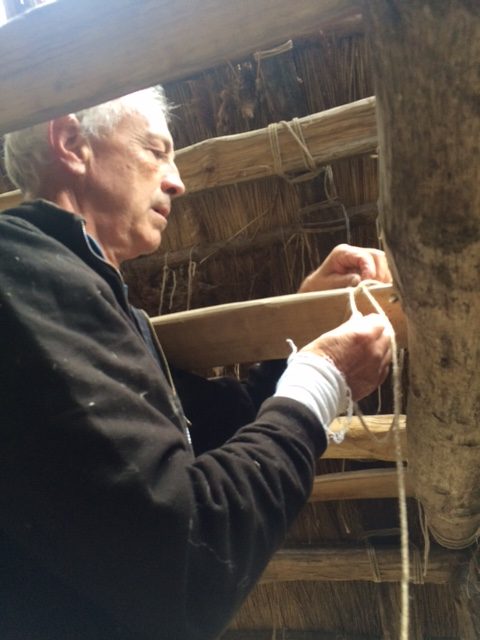
Derek is coming to the end of his task to make a shutter and window frame. We have all had brief glimpses of it partially fitted – and it is clearly a fine piece of work using known Neolithic carpentry construction – can’t wait!

The tie beams in the entrance way mezzanine are now being lashed to the posts using some of the fantastic cordage Astra has made. There are three uprights tie beams and we have decided to lash each one with a different type of cordage, Nettle, Sweet Chestnut, and Willow. This is a lovely piece of detail that will be clearly visible to visitors.


Friday 14th September 2018
Layer 6 is nearing completion and we are taking some time to dress and organise the thatch that is already on the roof. The next phase involves working on the ridge of the roof. The finished thatch ridge will bear the brunt of the weather and accordingly, needs to be substantial, secure and water tight. Our plan is to create several thatch rolls that will lay along the ridge line and create a depth of thatch at the very peak of the roof. The final two layers of thatch will then overlay these rolls and be trimmed off. The final stage is to then attach some kind of cap to the whole mass.
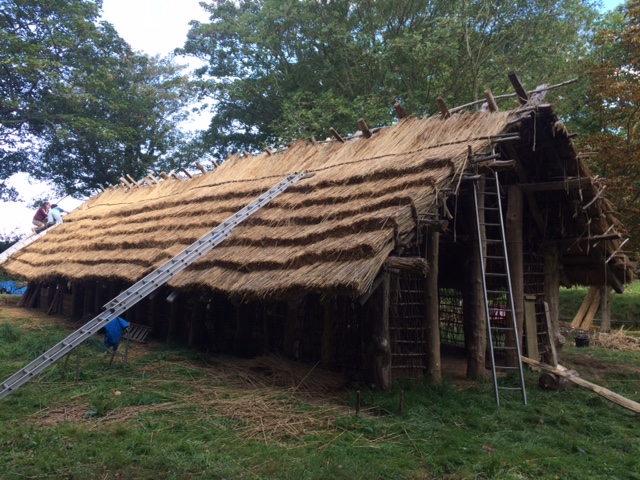

Saturday 15th September 2018
A calm sunny morning heralds the end of another week at La Hougue Bie,
Today we are continuing with dressing thatch layers 1-6 in readiness for the final two layers that will run up to, and over the ridge of the building. We have an enthusiastic team of daubers in the form of Andrea, Anya and Ruth who are mixing and applying our own unique blend to another of the many willow wall panels.

Derek is nearing completion of his amazing shutter and frame, is is impressive to see his commitment to accuracy and finish.

His standards set the benchmark for other projects on site. Interestingly i don’t think it is in anyway out of place. Existing and new evidence for crafts and carpentry in the Neolithic Period show high levels of finishing and sometimes unnecessary complexity. Well linings from Germany show the presence of mortise and tenon joints where simple overlapping joints will suffice (as demonstrated in other well linings). The planks are split and shaped but not refined (the well lining was intended not to be seen after all) but the level of sophistication can only hint at the level of finish and refinement that would have been invested in visible items of furniture for example.

From the start of this project, our mantra has been one of expelling the commonly held belief of the Neolithic as a time of rudimentary adoption of agriculture, all of its associated trappings, and its struggle, almost kicking and screaming into modernity. Each new discovery confirms to us that this period, coming right at the end of the Stone Age, is abundant with sophistication and a knowledge of materials and their properties that we will never attain again.
